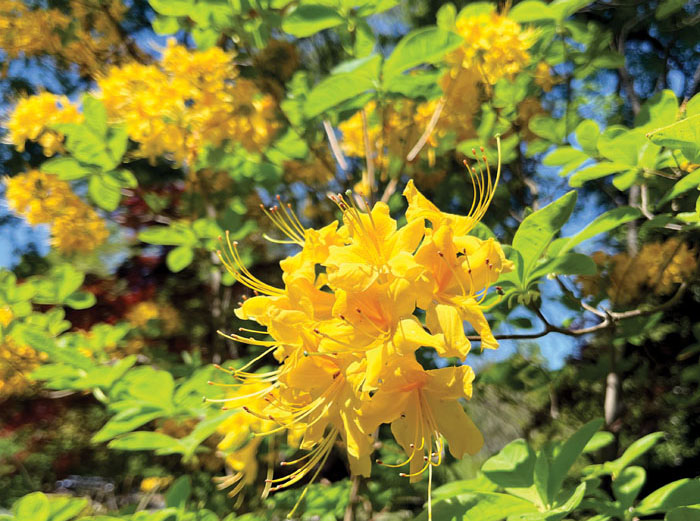Sarina Dellinger column: Native plants at Hurley Park
Published 12:00 am Saturday, April 30, 2022

- Native azalea at Hurley Park
By Sarina Dellinger
For the Salisbury Post
Spring is in full swing at Hurley Park with new flowers opening every week. It’s such an exciting time to witness nature and see the perennials and trees seeming to coming back to life. The evergreen and native azaleas are blooming all over the park, along with the fringetree, phlox, dianthus, iris and more!
An exciting shift in the gardening community is happening, a shift toward a focus on native plants. But, what is a native plant anyway? The general idea is that they are plants that have evolved naturally in an area without human intervention and have formed ecological relationships with other species. These plants are adapted to the local climate, soil types and hydrology of the area they are native to. They also provide vital resources for the insects, mammals and other creatures that are native to the area as well. The U.S. Department of Agriculture PLANTS database lists over 3,900 species of plants that are native to North Carolina.
When choosing from the plethora of native plant species to add to your landscape it’s important to identify their preferred growing conditions before selecting them. There are some species that are specially adapted to very sandy soils, full sun conditions and other unique combinations. Some native plants are too aggressive for a small, front yard garden bed and are a better fit for large scale plantings such as meadows. Spending time learning about the plants you are choosing can help save time, money, and gardening strife in the future. For example, goldenrod is a wonderful native plant for pollinators and birds, but it is an aggressive spreader by seed and rhizome (underground stem that produces new roots and shoots of the parent plant) that can easily crowd out more well-behaved plants in a small garden bed.
At Hurley Park, we have a variety of native plants, native plant cultivars and non-native plants. The Fuller Perennial Garden and the Ingeborg Seiffert Perennial Garden are teeming with dominating native perennials like beebalm, goldenrod ‘fireworks’, swamp sunflowers, black-eyed Susans and more. There are also well-behaved perennials mixed in such as baptisia which I would recommend for almost any home garden. In many gardens at Hurley Park you can find green and golds and wild ginger which are wonderful native groundcovers. Within the gardens along Annandale Avenue, you can view the native, deciduous azaleas which are in bloom right now. In addition to that there are rhododendron, woodland phlox, dogwoods, Solomon’s seal and more. The Murphy Garden is filled with Virginia spiderwort which is an adaptable plant that is in bloom right now, too.
If you’re curious about the native plant species at Hurley Park, join us at 10 a.m. on May 10 for the monthly garden tour. We’re also excited to host a native plant swap prior to the tour. We’ll meet at 10 a.m. near the Haden Holmes Hurley Gazebo. If you don’t have any native plants to swap — come anyway! Hurley Park staff has been working on dividing and potting up some exciting native plants to share with the community. If you are unsure about a plant you have and want to share, please feel free to email Sarina.Dellinger@salisburync.gov with a photo to confirm that it is native.
If you have questions about Hurley Park, or want to know how to book events, please give us a call at 704-638-5298, or contact us on Facebook or Instagram @HurleyParkNC. To view a map or donate to Hurley Park, visit our website at salisburync.gov/hurleypark.
Sarina Dellinger is public garden manager for Salisbury Parks and Recreation.




